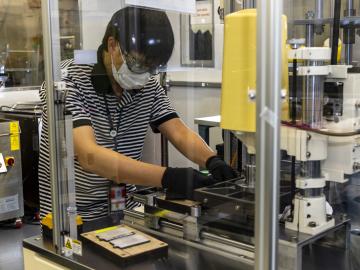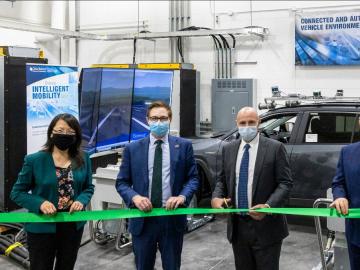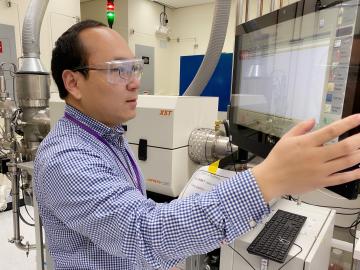
Filter News
Area of Research
- Advanced Manufacturing (2)
- Biology and Environment (6)
- Computer Science (2)
- Energy Science (32)
- Energy Sciences (1)
- Fusion and Fission (4)
- Fusion Energy (5)
- Isotope Development and Production (1)
- Isotopes (2)
- Materials (20)
- Materials for Computing (3)
- National Security (5)
- Neutron Science (8)
- Nuclear Science and Technology (21)
- Nuclear Systems Modeling, Simulation and Validation (2)
- Quantum information Science (3)
- Supercomputing (17)
News Topics
- (-) Advanced Reactors (14)
- (-) Artificial Intelligence (8)
- (-) Energy Storage (21)
- (-) High-Performance Computing (3)
- (-) Nuclear Energy (34)
- (-) Polymers (7)
- (-) Quantum Science (14)
- (-) Security (3)
- 3-D Printing/Advanced Manufacturing (29)
- Big Data (11)
- Bioenergy (13)
- Biology (5)
- Biomedical (22)
- Biotechnology (2)
- Buildings (1)
- Chemical Sciences (5)
- Clean Water (2)
- Composites (1)
- Computer Science (39)
- Coronavirus (25)
- Critical Materials (3)
- Cybersecurity (4)
- Environment (29)
- Exascale Computing (3)
- Frontier (1)
- Fusion (14)
- Grid (7)
- Isotopes (8)
- Machine Learning (8)
- Materials (2)
- Materials Science (39)
- Mathematics (2)
- Mercury (1)
- Microscopy (8)
- Molten Salt (2)
- Nanotechnology (17)
- National Security (2)
- Neutron Science (35)
- Physics (13)
- Space Exploration (4)
- Summit (17)
- Transportation (15)
Media Contacts

Soteria Battery Innovation Group has exclusively licensed and optioned a technology developed by Oak Ridge National Laboratory designed to eliminate thermal runaway in lithium ion batteries due to mechanical damage.

Four research teams from the Department of Energy’s Oak Ridge National Laboratory and their technologies have received 2020 R&D 100 Awards.

ORNL and Department of Energy officials dedicated the launch of two clean energy research initiatives that focus on the recycling and recovery of advanced manufacturing materials and on connected and

About 60 years ago, scientists discovered that a certain rare earth metal-hydrogen mixture, yttrium, could be the ideal moderator to go inside small, gas-cooled nuclear reactors.

Scientists at ORNL and the University of Nebraska have developed an easier way to generate electrons for nanoscale imaging and sensing, providing a useful new tool for material science, bioimaging and fundamental quantum research.

Kübra Yeter-Aydeniz, a postdoctoral researcher, was recently named the Turkish Women in Science group’s “Scientist of the Week.”

Radioactive isotopes power some of NASA’s best-known spacecraft. But predicting how radiation emitted from these isotopes might affect nearby materials is tricky

Researchers at ORNL used quantum optics to advance state-of-the-art microscopy and illuminate a path to detecting material properties with greater sensitivity than is possible with traditional tools.

The Department of Energy announced awards for 10 projects with private industry that will allow for collaboration with DOE national laboratories in accelerating fusion energy development.

A developing method to gauge the occurrence of a nuclear reactor anomaly has the potential to save millions of dollars.


